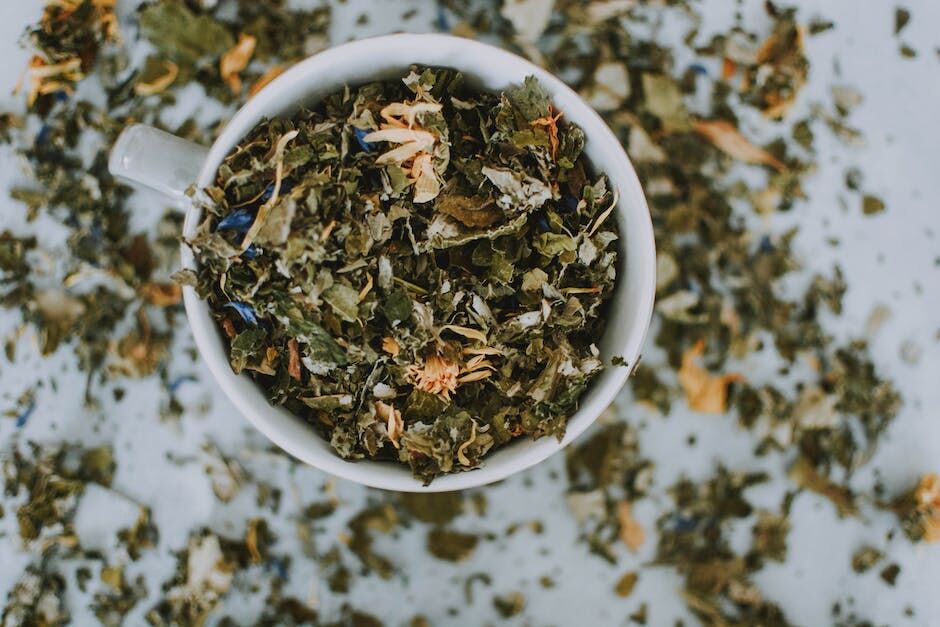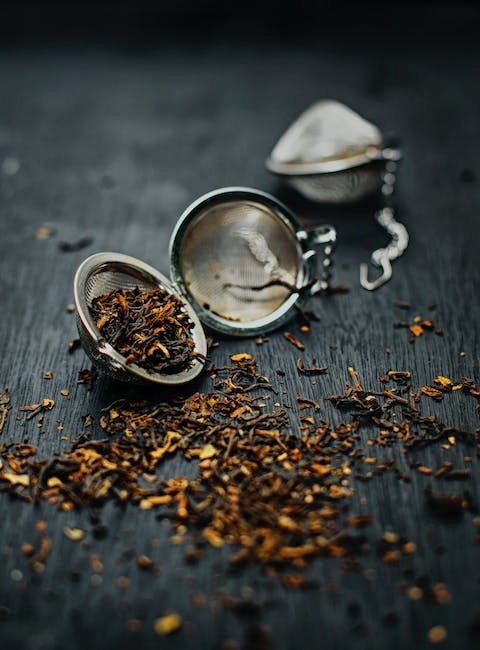Discover the Bold and Lively Flavor of Ceylon Tea
If you’re a tea lover, you may have heard of Ceylon tea. But do you know what makes it so special? In this blog post, we’ll dive into the world of Ceylon tea and explore its origins, flavor profile, and processing methods.
Where Does Ceylon Tea Come From?
Ceylon tea is a type of tea that is grown and produced in Sri Lanka, a country located in South Asia. Sri Lanka is one of the largest tea-producing countries in the world, and Ceylon tea is one of its most popular exports. In fact, Ceylon tea is so important to Sri Lanka’s economy that it’s often referred to as the country’s “liquid gold.”
What Makes Ceylon Tea Different?
Ceylon tea is known for its bold, full-bodied flavor, as well as its bright and lively aroma. This is due in part to the fact that it can be made from a variety of tea plants, including Camellia sinensis var. assamica and Camellia sinensis var. sinensis. The former is a larger-leafed plant that is typically used in the production of black teas, while the latter is a smaller-leafed plant that is used for green and white teas.
Depending on the processing method, Ceylon tea can be classified as either black tea, green tea, or white tea. While Ceylon tea is often associated with black tea, it is also possible to find green Ceylon tea. However, green Ceylon tea is less common than black Ceylon tea. Some popular varieties of green Ceylon tea include Ceylon Gunpowder Green, Ceylon Green Tea with Jasmine, and Ceylon Green Tea with Lemon.
How is Ceylon Tea Processed?
The processing method used for Ceylon tea depends on the type of tea being produced. Black Ceylon tea is typically made using the orthodox method, which involves withering, rolling, oxidation, and drying. This results in a tea with a bold, robust flavor and deep, reddish-brown color.
Green Ceylon tea, on the other hand, is typically made using the CTC (crush, tear, curl) method. This involves crushing, tearing, and curling the tea leaves, which results in a tea with a lighter, more delicate flavor and a pale green color.
What Are Some Ways to Enjoy Ceylon Tea?
Ceylon tea can be enjoyed in a variety of ways. Some people prefer to drink it hot, while others enjoy it iced or blended into a tea latte. Ceylon tea can also be infused with flavors such as lemon, honey, or spices like cinnamon or cardamom.
If you’re looking for a traditional way to enjoy Ceylon tea, try it with a splash of milk and sugar. This is how many Sri Lankans drink their tea, and it’s a great way to balance out the bold flavor of black Ceylon tea.
Conclusion
Whether you’re a tea aficionado or simply looking to try something new, Ceylon tea is definitely worth a taste. Its bold, full-bodied flavor and bright, lively aroma make it a unique and memorable tea experience. So the next time you’re browsing the tea aisle, be sure to pick up a box of Ceylon tea and discover the magic of Sri Lanka’s “liquid gold.”
The Wonders of Green Tea: A Closer Look at This Refreshing and Healthy Beverage
Green tea is a type of tea that has been consumed for centuries in China and Japan. It is made from Camellia sinensis leaves and buds that have not undergone the same withering and oxidation process used to make black and oolong teas. Instead, the oxidation process is halted by heating the leaves immediately after plucking, which preserves the green color of the leaves and gives the tea a delicate, fresh flavor and aroma.
If you’re wondering what makes green tea different from other types of tea, it’s all in the processing. While black tea is fully oxidized and oolong tea is partially oxidized, green tea is not oxidized at all. This means the leaves retain more of their natural antioxidants, which can help protect against cancer, heart disease, and other chronic illnesses.
What’s more, green tea contains caffeine, which can provide a boost of energy and improve mental alertness. But unlike coffee, which can cause jitters and crashes, green tea is known for its calming effect on the body. That’s because it contains an amino acid called L-theanine, which promotes relaxation and reduces stress.
But not all green teas are created equal. There are many different varieties, each with its own unique flavor profile and health benefits. Some popular types include:
- Sencha: This is the most popular type of green tea in Japan. It has a grassy, vegetal flavor and is often used in tea ceremonies.
- Matcha: This is a powdered form of green tea that is whisked with hot water to create a frothy, creamy beverage. It has a strong, earthy flavor and is often used in baking and cooking.
- Gyokuro: This is a high-quality green tea that is grown in the shade for several weeks before harvesting. It has a sweet, mellow flavor and is considered a luxury tea.
- Dragonwell: This is a green tea from China that has a nutty, sweet flavor and a smooth texture. It is often described as one of the world’s best teas.
So, is Ceylon tea green tea? The answer is: it depends. Ceylon tea is a type of black tea that is grown in Sri Lanka, but there are also green and white tea varieties produced in the country. Therefore, it is possible to find Ceylon tea that is green tea if it has been processed using the same method as other green teas. However, the default assumption when someone refers to Ceylon tea is that it is a black tea, not a green tea.
In conclusion, green tea is a healthy and refreshing beverage that is enjoyed by millions of people around the world. Whether you prefer sencha, matcha, gyokuro, or dragonwell, there is a green tea out there for everyone. So why not give it a try and see what all the fuss is about? Your body (and taste buds) will thank you!
Ceylon Tea vs Green Tea: What’s the Difference?
Tea is one of the most popular drinks in the world, and for good reason. It’s flavorful, refreshing, and comes in a range of varieties that cater to different tastes and preferences. Two of the most popular types of tea are Ceylon tea and green tea, both of which offer distinct flavor profiles and health benefits.
Origins

Ceylon tea is a type of black tea that is grown and produced in Sri Lanka, which was formerly known as Ceylon. On the other hand, green tea is a type of tea that is made from unoxidized leaves and is popular in many Asian countries, particularly in China and Japan.
Taste and Flavor Profile
While both Ceylon tea and green tea come from the same plant species, Camellia sinensis, they undergo different processing methods that result in distinct flavor and color profiles. Ceylon tea is typically stronger and more full-bodied than green tea, with a rich and robust flavor. It is often described as having notes of citrus, spice, and caramel. Green tea, on the other hand, is known for its delicate and fresh taste, with a light vegetal flavor and a slightly astringent finish.
Caffeine Content
Both Ceylon tea and green tea contain caffeine, but the amount may vary depending on the specific tea and brewing method used. Generally, Ceylon tea contains more caffeine than green tea, but this can vary depending on the specific type of tea.
Health Benefits
Green tea is often consumed for its health benefits, as it is rich in antioxidants and other nutrients. Some studies suggest that green tea may help improve brain function, boost metabolism, and reduce the risk of certain diseases such as cancer and heart disease. Ceylon tea also contains antioxidants, but to a lesser extent than green tea.
Conclusion
While Ceylon tea and green tea may have their differences, they both offer unique and enjoyable tea-drinking experiences that can be enjoyed by tea lovers around the world. Whether you prefer a strong, robust flavor or a delicate and fresh taste, there’s a tea out there that’s perfect for you. So why not try both Ceylon tea and green tea and see which one you like best?
Ceylon Tea vs Green Tea: Which is Healthier?
Tea is one of the world’s most popular beverages, and for good reason. Not only is it delicious and comforting, but it also offers a variety of health benefits. Two popular types of tea are Ceylon tea and green tea. While they may seem similar, they actually come from different plants and have unique characteristics. So, which one is healthier?
The Basics: Ceylon Tea vs Green Tea
Ceylon tea is made from the Camellia sinensis plant, which is native to Sri Lanka (formerly known as Ceylon). On the other hand, green tea is also made from the same plant, but it is grown and processed differently, mostly in China and Japan.
Health Benefits of Ceylon Tea and Green Tea
Both Ceylon tea and green tea are known for their health benefits, which are mostly due to their high content of antioxidants, such as catechins, flavonoids, and polyphenols. These compounds have been linked to various health benefits, such as reducing inflammation, improving heart health, boosting the immune system, and preventing certain types of cancer.
However, the specific types and amounts of antioxidants may differ depending on factors such as the processing method, growing conditions, and brewing method. For example, green tea is often touted as having higher levels of EGCG (epigallocatechin gallate), a type of catechin that has been studied for its anti-cancer properties. But, some studies have also found high levels of EGCG in Ceylon tea.
Quality Matters
It’s worth noting that not all Ceylon tea or green tea products are created equal in terms of their health benefits. Factors such as the quality of the tea leaves, the processing method, and the brewing technique can all affect the final product. For example, tea bags may contain lower-quality tea leaves and may not be brewed optimally, whereas loose-leaf tea may retain more of its beneficial compounds and allow for better brewing control.
Conclusion
So, which one is healthier? It’s difficult to say definitively as both offer potential health benefits due to their antioxidant content. The specific benefits may depend on factors such as the type of tea, the growing and processing methods, and the brewing technique. It’s important to choose high-quality tea products and brew them optimally to maximize their health benefits.
At the end of the day, whether you prefer Ceylon tea or green tea, incorporating either one into your daily routine is a great way to enjoy a delicious beverage while also reaping some potential health benefits. Cheers to good health!


Leave a Reply